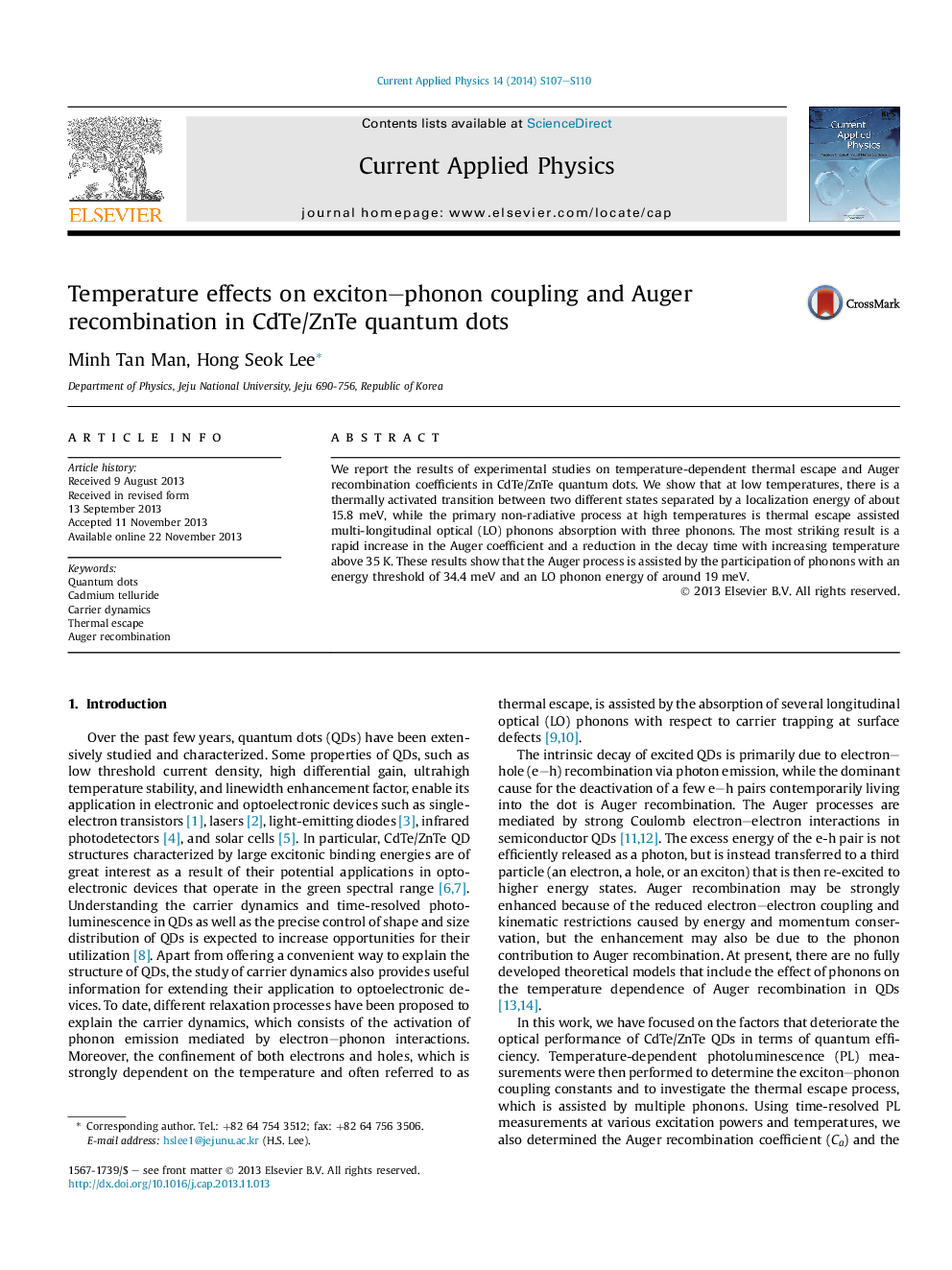| Article ID | Journal | Published Year | Pages | File Type |
|---|---|---|---|---|
| 1787281 | Current Applied Physics | 2014 | 4 Pages |
•Non-radiative process affects photoluminescence quantum efficiency of quantum dots.•Thermal escape process is suggested by scattering of optical phonons absorption.•Auger coefficient of quantum dots increases with increasing temperature.•Decay time of quantum dots decreases with increasing temperature.•Auger recombination is assisted by participation of phonons.
We report the results of experimental studies on temperature-dependent thermal escape and Auger recombination coefficients in CdTe/ZnTe quantum dots. We show that at low temperatures, there is a thermally activated transition between two different states separated by a localization energy of about 15.8 meV, while the primary non-radiative process at high temperatures is thermal escape assisted multi-longitudinal optical (LO) phonons absorption with three phonons. The most striking result is a rapid increase in the Auger coefficient and a reduction in the decay time with increasing temperature above 35 K. These results show that the Auger process is assisted by the participation of phonons with an energy threshold of 34.4 meV and an LO phonon energy of around 19 meV.
